Annette Schelten & Krishnan
Crew Management System for Airlines: Plan duties for pilots & flight attendants worldwide
#1about 2 minutes
Understanding the complexity of airline crew management
Airline crew management involves navigating complex variables like multiple fleets, time zones, international regulations, and union agreements.
#2about 3 minutes
The three core stages of crew planning
The process involves pairing flight sequences into rotations, rostering crew members to those rotations, and tracking real-time disruptions.
#3about 2 minutes
Challenges of the existing legacy system
The original system is a two-decade-old monolith with a mix of architectural styles, C++ business logic, and a desktop UI.
#4about 2 minutes
Defining the cloud-native modernization strategy
The transformation goal is to create a cloud-native application using domain-driven design, public APIs, and a modern tech stack with automated CI/CD pipelines.
#5about 1 minute
Using the strangler pattern for gradual migration
The strangler fig pattern allows the new cloud-native application to coexist with the legacy system, enabling a gradual, domain-by-domain transformation.
#6about 3 minutes
Implementing microservice and micro-frontend architectures
The new architecture uses self-contained systems with multiple microservices and a React-based micro-frontend UI to create a unified user experience.
#7about 3 minutes
Maintaining quality with automation and observability
Decomposing the monolith requires robust CI/CD pipelines and centralized logging, tracing, and metrics for holistic monitoring in Kubernetes.
#8about 2 minutes
Operating a hybrid infrastructure during transition
The transition involves a hybrid setup where legacy applications run on VMs while new cloud-native services run in Kubernetes (AKS).
#9about 2 minutes
Using AI to accelerate the modernization process
AI is being explored to speed up modernization through agent-assisted code refactoring, natural language test case generation, and AI-powered chatbots.
#10about 2 minutes
Aligning organizational structure with new architecture
Successful modernization requires adopting scaled agile frameworks like SAFe to support the microservice architecture with autonomous, component-focused teams.
Related jobs
Jobs that call for the skills explored in this talk.
Matching moments
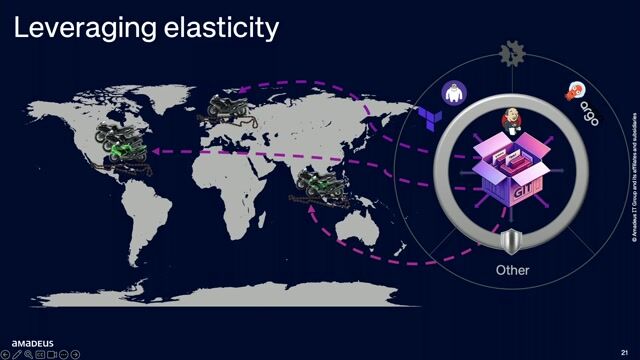
13:02 MIN
The history of operational complexity driving automation
Everything as Code: A Dozen As-Code Concepts beyond Infrastructure or Configuration as Code

00:06 MIN
A career journey from CMS to cloud and WebAssembly
The Future of Cloud is WebAssembly
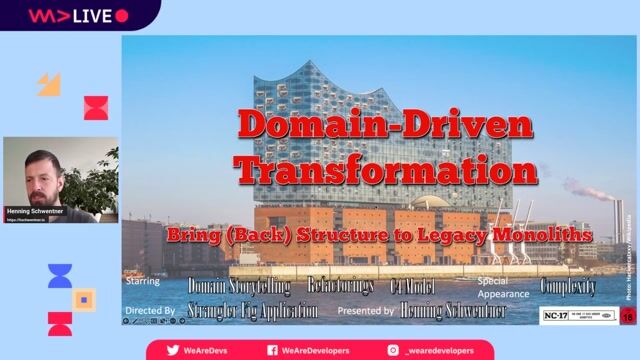
00:33 MIN
Transforming legacy systems like renovating old buildings
Domain-Driven Transformation—How to Bring (Back) Sustainable Architecture to Legacy and Monoliths

05:47 MIN
The challenge of migrating the Lidl online shop to the cloud
Let developers develop again

00:46 MIN
Scaling a digital team from 100 to 300 employees
Creating healthy high performing organizations - the missing link
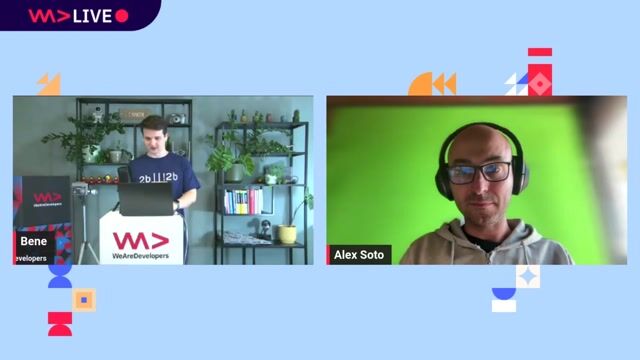
38:52 MIN
Q&A on hybrid cloud strategy and data management
Embracing the Hybrid Cloud: Unlocking Success with Open Source Technologies
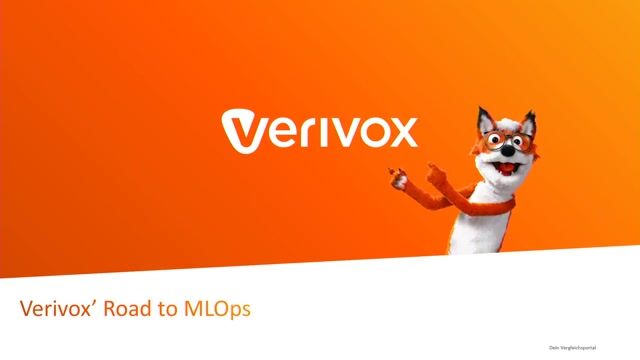
08:25 MIN
Overcoming siloed code and deployment bottlenecks
The Road to MLOps: How Verivox Transitioned to AWS
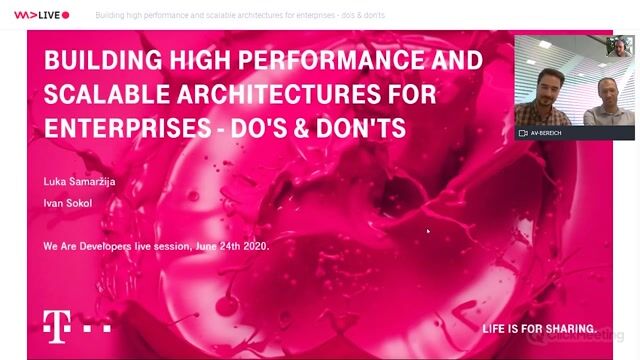
00:31 MIN
The challenge of modernizing enterprise IT landscapes
Building high performance and scalable architectures for enterprises
Featured Partners
Related Videos
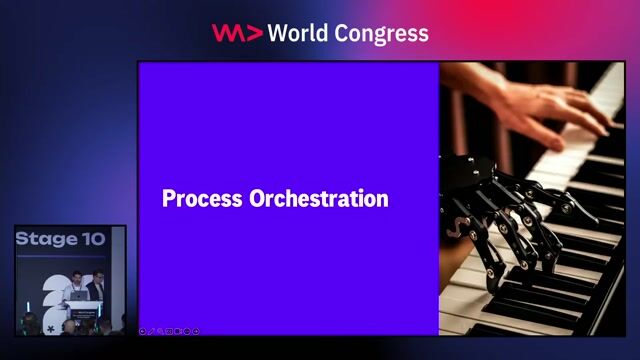 27:33
27:33Transforming Task Management: Integrating Camunda with Scalable Frontend Solutions
Kevin Kaiser & Ludwig Wrabel
 26:45
26:45How to Destroy a Monolith?
Babette Wagner
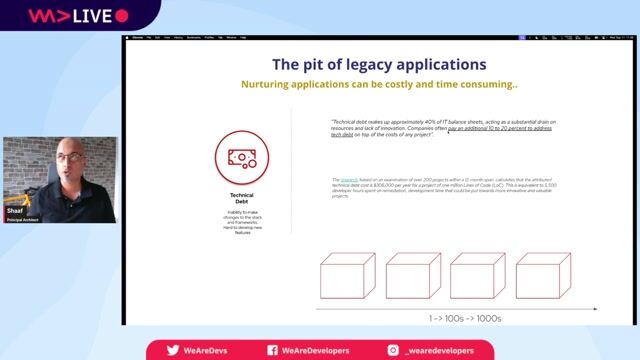 41:17
41:17Application Modernization Leveraging Gen-AI for Automated Code Transformation
Syed M Shaaf
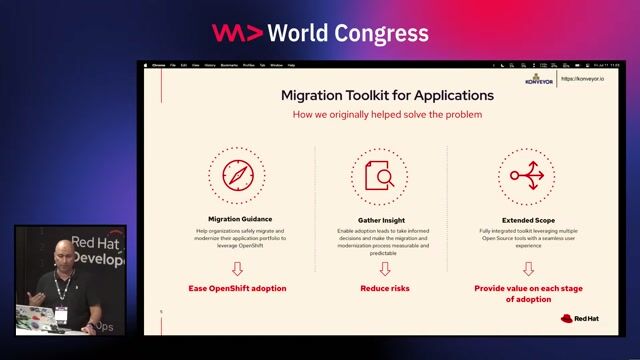 26:55
26:55Navigating Application Modernization - Leveraging Gen-AI
Shaaf
 08:23
08:23Migrating from COBOL with AI: A Moonshot Demo
Julia Kordick
 26:53
26:53Enhancing Developer Experience During Architecture Modernization
Mauricio Frias
 34:46
34:46We adopted DevOps and are Cloud-native, Now What?
Bruno Amaro Almeida
 26:19
26:19Winning the Hybrid Cloud
Alex Soto
From learning to earning
Jobs that call for the skills explored in this talk.

DevOps Engineer – Kubernetes & Cloud (m/w/d)
epostbox epb GmbH
Berlin, Germany
Intermediate
Senior
DevOps
Kubernetes
Cloud (AWS/Google/Azure)

Senior DevOps Engineer (f/m/x)
Douglas GmbH
Düsseldorf, Germany
Senior
Kubernetes
Cloud (AWS/Google/Azure)

Tech Lead (m/f/d) - Berlin
Patronus Group
Berlin, Germany
Senior
Kotlin
Android
Angular
Spring Boot
Amazon Web Services (AWS)






PRODUCT OWNER (ALL GENDERS) - PRODUCTION PLANNING CLOUD AI-APPLICATION
STREMLER AG
€58-71K
Scrum
Agile Methodologies